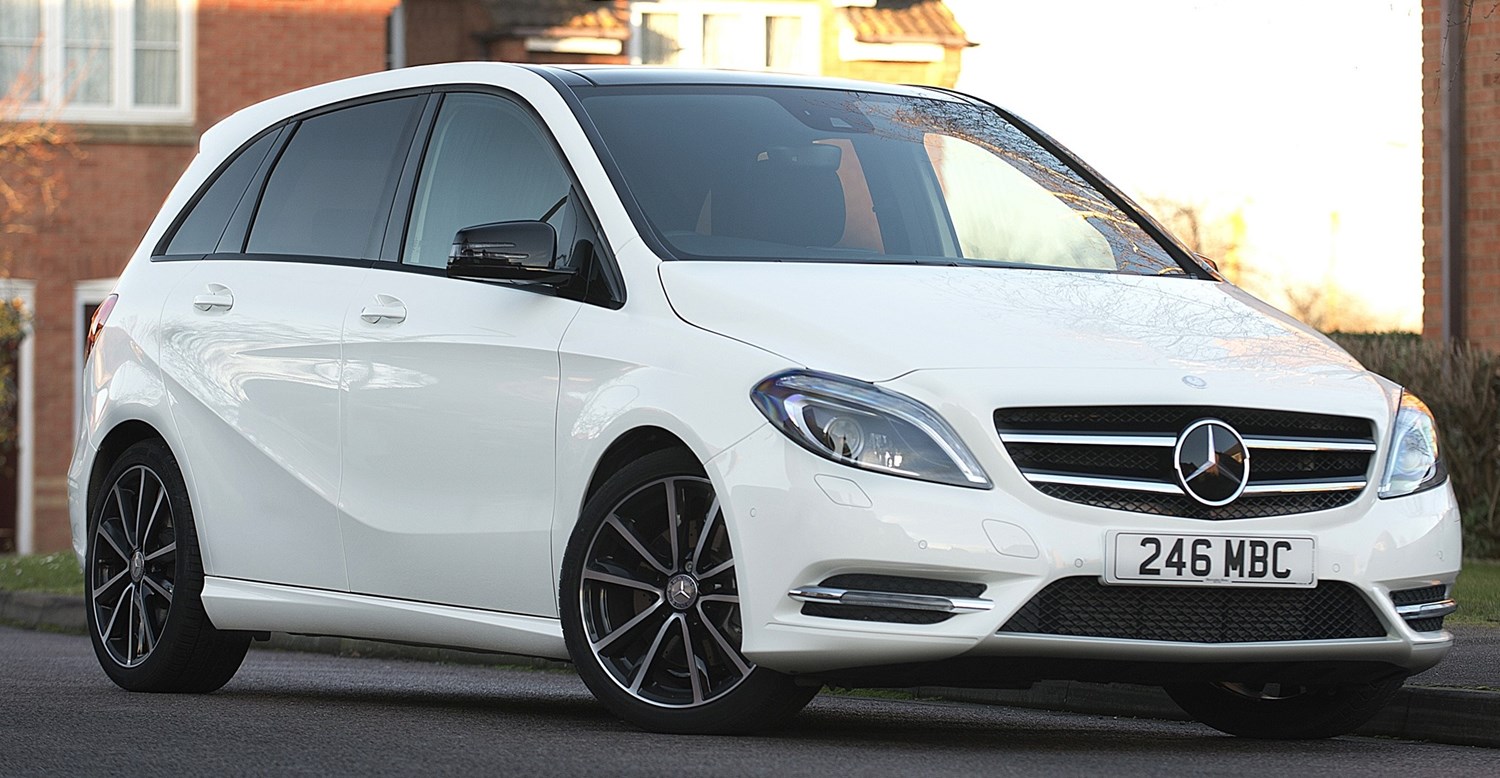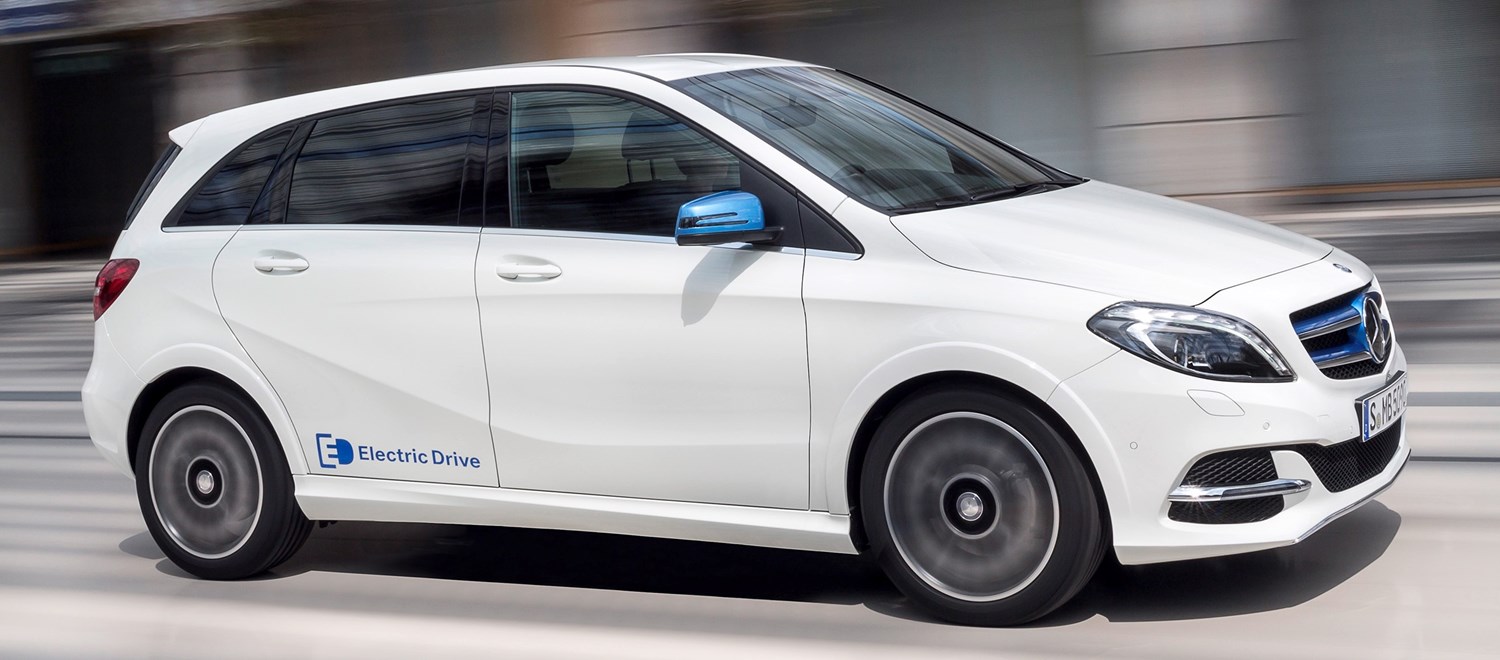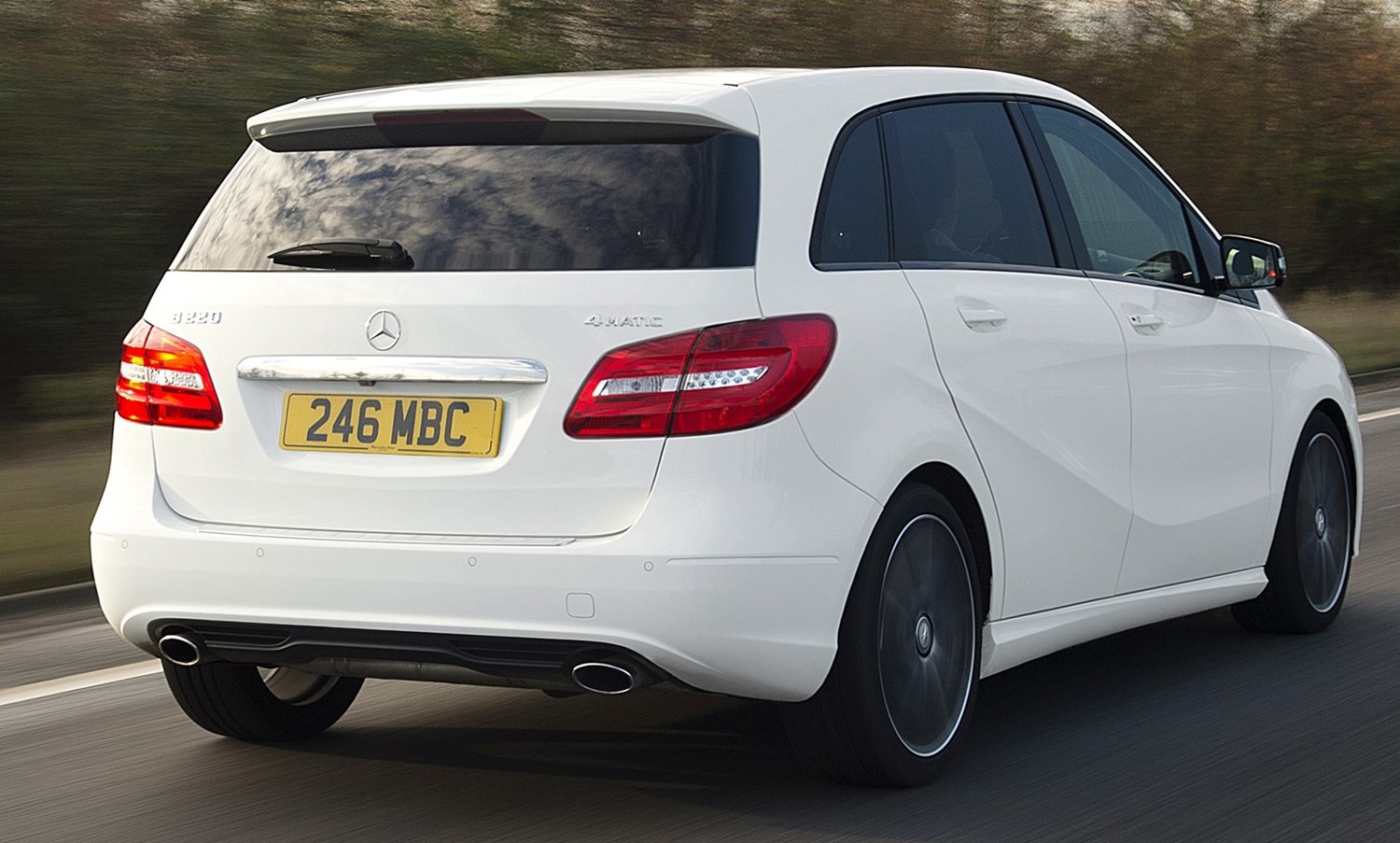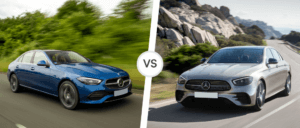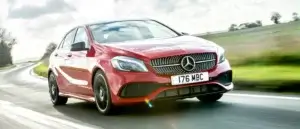Space and practicality
Although the B-Class is very spacious and roomy, it's important to note that it's only a five-seater. Some cars of this kind can offer a third row of seats for occasional use, but the B-Class has no such option.
By not trying to force in additional seats, the B-Class manages 488 litres of boot space, rising to 1,547 litres with the back row of seats folded. This means that there's over a third more space in the boot than the A-Class it's based on.
The B-Class was tested by Euro NCAP in 2011 when the second generation model debuted. It scored a full five stars and, impressively, a 97% score for adult occupant safety. When you consider that every safety aid is standard on every B-Class, including eight airbags, adaptive brake assist, stability control, an emergency call system and emergency interior lighting, it's probably not a surprise.
Engines
There's a selection of six engines in the B-Class, with two petrol, three diesel and an electric alternative.
The first petrol option is a 1.6-litre, four-cylinder engine, dubbed the B180, which produces 120hp. It's enough to get the B-Class to 60mph in a reasonable 8.8 seconds (8.5s for the automatic), with a 124mph top speed. CO2 emissions sit at 129g/km, equivalent to 50.4mpg, with the automatic 2g/km and 0.2mpg better off.
An alternative version of this engine, called the B200, packs 154hp. It's notably quicker, with 60mph coming up after just 8 seconds and a 137mph top speed, but there's only a minor CO2 penalty and the B200 still returns 49.6mpg.
Diesels start with a 1.5-litre engine under the B180d name, which is actually a Nissan/Renault engine rather than a Mercedes unit. With 108hp, it's the slowest B-Class and takes 11.4 seconds to reach 60mph. The trade-off is a 104g/km CO2 rating and as much as 70.6mpg combined, depending on specification.
The B200d uses a 2.1-litre Mercedes engine. This has 134hp, which will see the car hit 60mph in 9.2s (8.7s for the automatic) and on to 130mph. It's not significantly worse on fuel though, and with the automatic gearbox it matches the 70.6mpg rating.
A third diesel is a variant of the same 2.1-litre unit, tuned to 175hp and named B220d. Hitting 60mph in 7.4 seconds with a 139mph top speed, it's the highest performance option. Fuel economy is barely worse, with 108g/km CO2 and 67.3mpg combined.
This is the only car available with 4MATIC four-wheel drive, although this puts a serious dent in the running cost credentials, slashing economy to 56.5mpg combined.
The Electric Drive, also known as the B250e, uses a 177hp electric motor powering the front wheels. Despite being 150kg heavier it still manages to hit 60mph in 7.7 seconds, and will run up to 99mph. It has a 124-mile range, increasing to 142 miles if you pick the Range Plus option.
Using a battery pack sourced from Tesla, the car will charge from empty in 2.5 hours if you have an appropriate 3-phase charger, or around 9 hours from 16 amp charging points.
Running costs
When it comes to day-to-day costs, the Electric Drive is the obvious choice. It's zero-rated for emissions, which means it qualifies for the very lowest road tax bands, and your refills are pennies on your electricity bill instead of pounds at the pumps.
The diesels are the pick for conventionally-fuelled cars though. Despite the performance differences, each will manage around 70mpg, with the automatics fractionally more frugal than the manuals. Exercise caution with the 4MATIC cars though, as the four-wheel drive system saps fuel – expect no better than 56mpg and probably under 50mpg in normal use.
Nevertheless, even the petrol cars are rated at around 50mpg, and this means that even the most expensive B-Class to run is only in the £200 first-year VED bracket. While it is possible to specify a B-Class to over £40,000, it won't be a consideration in almost all cases, so there are no worries about the extra £310 yearly VED that would bring.
Insurance costs ought to be reasonable. MPVs are typically inexpensive when it comes to insurance, and even though this is a Mercedes-Benz, every car is between group 15 and 24, even the Electric Drive. The bulk of the range is around group 19, with just the more powerful engines and higher specifications like AMG Line attracting higher groups.
Maintenance costs might be a wrinkle. Mercedes usually puts in a middling performance in reliability surveys not because they break but because they're expensive to fix if they do. The B-Class shares quite a few parts with the A-Class and GLA-Class (and Infiniti Q30/QX30), but these are low volume cars and the availability of parts in combination with the standards to which they're made may mean steep repair bills.
